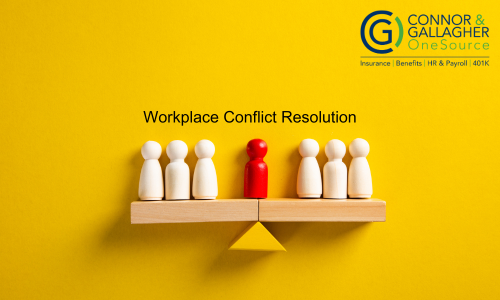Conflict Resolution in the Workplace - Strategies for Success
In any workplace, conflicts are bound to arise. Differences in opinions, work styles, and personalities can lead to misunderstandings and disputes among colleagues. While conflict can be uncomfortable, it also presents an opportunity for growth and improvement. Resolving conflicts effectively can strengthen relationships, enhance collaboration, and foster a positive work environment. In this blog, we will explore practical strategies for resolving conflicts in the workplace.
Understanding Workplace Conflict
Before diving into conflict resolution strategies, it's essential to understand the different types of conflicts that can occur in a workplace:
- Interpersonal Conflicts: These arise between two individuals due to differences in personality, values, or communication styles.
- Intragroup Conflicts: Occurring within a group, these conflicts may stem from competition or differing opinions on project direction.
- Intergroup Conflicts: Disputes may arise between different departments or teams, often due to resource allocation or differing objectives.
- Organizational Conflicts: These can occur due to larger systemic issues, such as business decisions, company policies, or management practices.
Key Strategies for Conflict Resolution
- Acknowledge the conflict: The first step in resolving any conflict is recognizing that it exists. Avoiding or ignoring the issue can lead to increased tension and resentment. Encourage open communication to address the conflict promptly.
- Assess the situation: Analyze the conflict to understand its root causes. Gather information from all parties involved to gain different perspectives. This will help you identify the underlying issues that need to be addressed.
- Encourage open communication: Allow for dialogue where all parties can express their views openly. Active listening is crucial here. The goal is that everyone feels heard and understood. This will often diffuse any tension and pave the way for resolution.
- Focus on the issue, not the person: When discussing the conflict, maintain a focus on the specific issue. Avoid personal attacks and emotionally charged language, as this can escalate the conflict further.
- Explore solutions together: Collaborate with those involved to brainstorm potential solutions. Sometimes, compromise can lead to a resolution that satisfies all parties.
- Involve a mediator: If the conflict persists and parties are unable to reach an agreement, consider involving a neutral third-party mediator. A mediator can facilitate discussions and help guide the conflicting parties toward a resolution. Sometimes, holding these discussions offsite can allow for privacy and more in-depth conversations.
- Document the agreement: Once a resolution is reached, document the agreed-upon solutions and any steps to be taken. This can help prevent misunderstandings in the future and provides a reference point if similar issues arise again.
- Follow up: After resolving the conflict, follow up with the parties involved to ensure that the solution is being implemented and to address any lingering issues. This demonstrates commitment to fostering a positive work environment.
Creating a Culture of Conflict Resolution
Organizations that prioritize conflict resolution create a healthier, more collaborative workplace. Some ways to foster this include:
- Training and development: Provide employees with training on conflict resolution skills. Equip them with tools and techniques to handle disputes effectively.
- Encourage open communication: Regular check-ins can help identify potential conflicts before they escalate.
- Model positive behavior: Management should model effective conflict resolution behaviors. Demonstrating how to handle disagreements professionally can inspire employees to adopt similar practices.
In conclusion, conflict resolution is an essential skill in the workplace, and when handled effectively can lead to improved relationships, increased productivity, and an engaging organizational culture. By embracing this skill, you can ensure that employees flourish. If you would like assistance in these communication and other HR-related areas of practice, we are here to provide clarity and guidance.
Questions? Contact us at info@GoCGO.com.

The views expressed by the authors on this website do not necessarily reflect the views of the website owners, operators, or any affiliated organizations. This blog is for educational and/or informational purposes only and does not constitute tax, financial, or legal advice.
While we’ve done our best to provide accurate and current information at the time of writing this blog, the information within this article is not guaranteed to be complete, correct, timely, current or up-to-date. Similar to any printed materials, the information may become out-of-date. The Authors undertakes no obligation to update any Information on the Site; provided, however, that the Authors may update the Information at any time without notice in the Authors’ sole and absolute discretion. The Authors reserve the right to make alterations or deletions to the Information at any time without notice.






